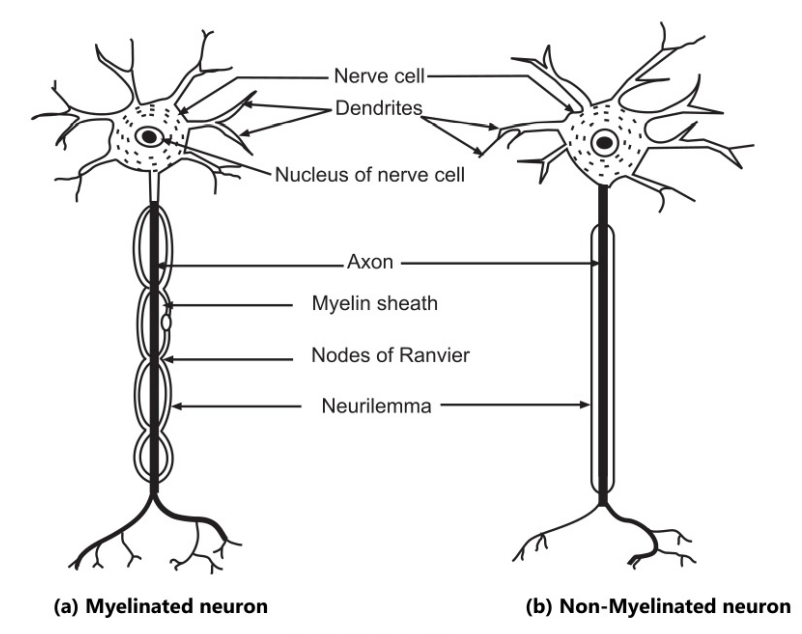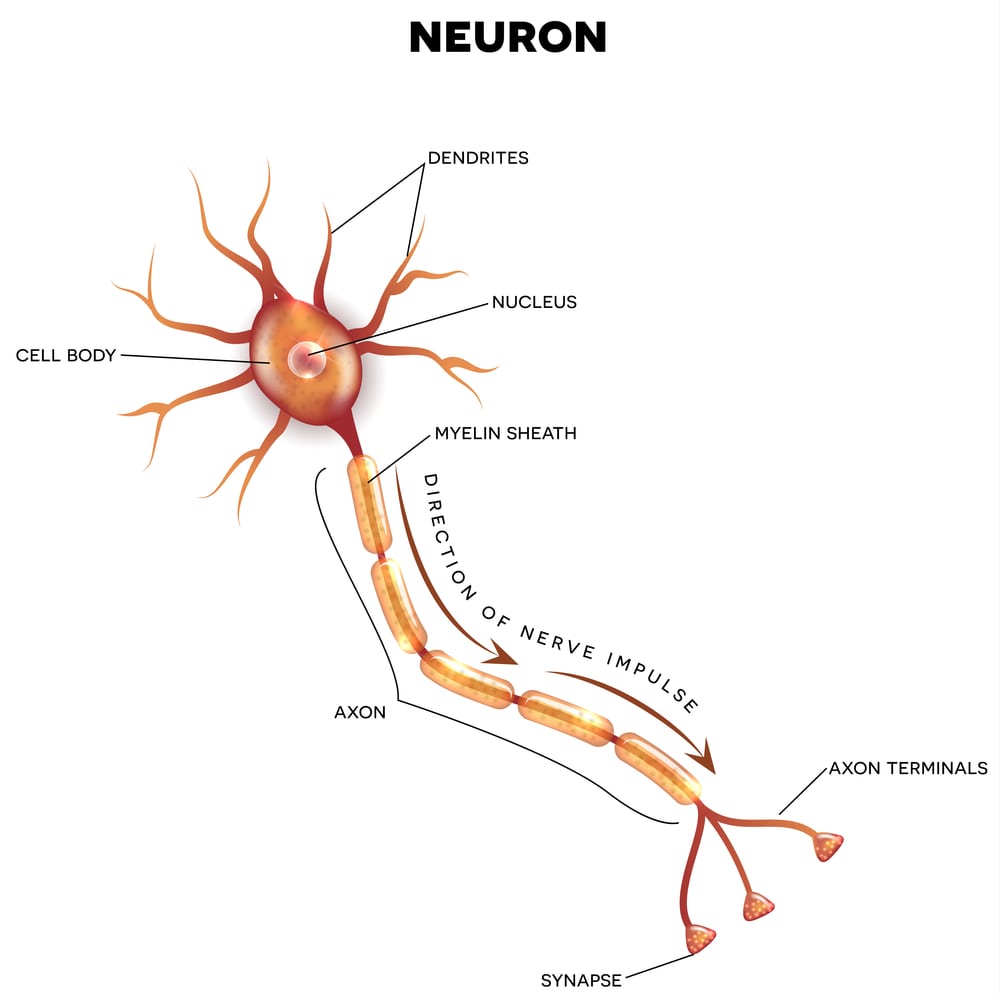The nervous tissue carries out the special function of carrying messages of stimuli within the body. The properties of irritability’ and ‘conductivity’ are specially developed in the nervous tissue. The impulses are conducted along the special cells ‘neurons’ which form a unit structure of the nervous tissue. The neurons are supported by a special type of connective tissue called neuralgia. Each neuron consists of a nerve cell and its processes are called axons and dendrites.

Nerve cells:
The nerve cells considerably vary in size and shape. They form gray matter of the nervous system and are found at the periphery of the brain, in the center of the spinal cord, in groups called ganglia outside the brain and the spinal cord, and as single cells in walls of organs.
Axons and Dendrites:
These are the processes of the nerve cells and form the white matter of the nervous system. They are found deep in the brain and at the periphery of the spinal cord and are described as nerves or nerve fibers outside the brain and the spinal cord.
The axon consists of the following parts:
Axo lemma: It is the membrane of the axon and contains axoplasm.
Myelin: It is a sheath of fatty material which surrounds most axons and gives them a white appearance. The myelin sheath is absent at intervals along the length of the axon and near its branching end. These intervals are called ‘Nodes of Rangier’ and they contribute to the rapid transmission of nerve impulses along the myelinated fibers.
The axons of the neurons which do not possess myelin sheath together form non-myelinated fibers.
Neurilemma: It is a very fine, delicate membrane surrounding the axons of all peripheral nerves. It consists of a series of ‘Schwann cells’ which surround the axon and the myelin sheath.
Dendrites: These are the processes on nerve cells that carry impulses towards nerve cells. These are shorter than axons and each neuron has many dendrites…
Types of Neurons
- Sensory or Afferent neurons: These neurons transmit impulses from the periphery of the body to the spinal cord and then to the brain where they are interpreted and sensed, e.g. sense of taste, sight, touch, etc.
- Motor or Efferent neurons: These neurons convey impulses from the brain and spinal cord to other parts of the body stimulating glandular secretion or causing muscle contraction.
- Intercalated neurons: These are found between sensory and motor neurons and form links in the pathways of nerves.
Synapse:
In the transmission of a nerve impulse, whether sensory or motor, more than one neuron is always involved. The point at which the nerve impulse passes from one neuron to another is called the synapse. Various chemicals known as transmitters are secreted in the synapse and are involved in the transmission of information across the synapse.
Tissue repair: The embryonic tissues are capable of dividing by mitosis enabling the tissues to grow and repair. As the body continues to develop, the ability of cells of certain. tissues to divide is greatly reduced and lost. Thus, muscular and nervous tissues lose their ability to divide on their complete development. On the other hand, other tissues of the body remain mitotically active and are capable of undergoing repair.
Following tissue damage, its repair begins with an inflammatory response. In tissue damage, the damage to blood vessels results in the formation of a blood clot. The fibroblasts. migrate into the blood clot and begin to form fibers that replace the clot and bridge the damaged surfaces of tissue. During this process, the blood vessels revascularize the area. In case of major tissue damage, the active fibroblasts produce actively growing connective tissue called granulating tissue. While fibroblasts produce fibrous tissue, the epithelial cells surrounding the damaged tissue undergo mitotic division forming new cells. The fibrous connective tissue is either resorbed as the new epithelial cells are formed, or else it remains as a permanent scar.
Make sure you also check our other amazing Article on : Muscle Tissue
